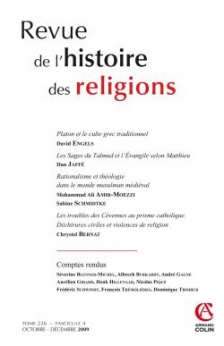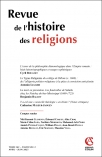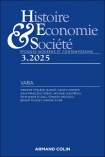
Revue de l'histoire des religions (4/2009)
Pour acheter ce numéro, contactez-nous
Recevez les numéros de l'année en cours et accédez à l'intégralité des articles en ligne.
En 1702 l’insurrection camisarde inaugure en Languedoc un temps de troubles religieux. La révolte mute en un conflit polymorphe. On examine ici la déclinaison des duels qui mirent aux prises instances politiques, clergé et populations, et l’entrée d’une société en guerre. L’approche souligne la multiplicité des violences – physiques, idéelles, langagières –, et des modalités d’affrontements confessionnels. À partir d’archives inédites, la thèse postule une reconsidération globale des troubles en incluant un troisième acteur proprement civil et en valorisant l’étude d’une guerre en son système. De ce défi protestant, unique dans l’histoire révocationnaire, elle interroge aussi l’état du catholicisme méridional arrivé au terme de son par jure.
The 1702 revolt of the Camisards following persecution is the start of a period of civil unrest in Languedoc. This dissertation analyses how a society enters into war : this revolt becomes a polymorphous conflict and opposing passions engage the political powers, the clergy and the civilian population. The types of religious confrontation and violence are multiple – physical, ideological, linguistic. This study offers a new overview of the conflict by drawing on previously unpublished archives and taking into account a third protagonist, purely civilian. It examines the war as a whole, beyond the confrontation between the Camisards and the political powers. Starting with this Protestant revolt, unparalleled in the « révocationnaire » period, it analyses the situation of Catholicism in Languedoc, which has at this point reached the limits of its self- betrayal.

